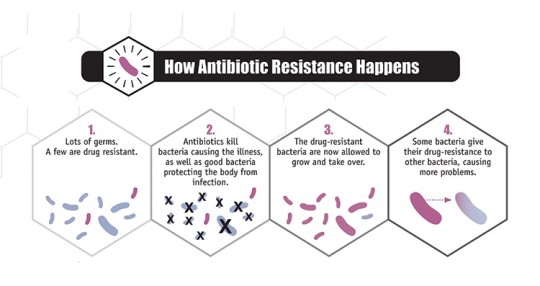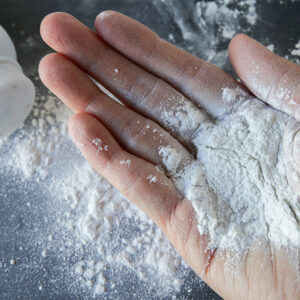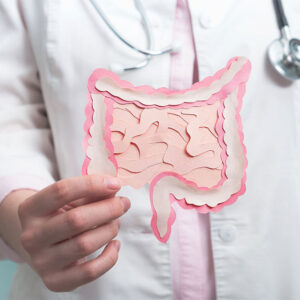
Easy Ways to Avoid Superbugs
- The “spiderbite” you never want to get
- Chances are you’ve taken this overprescribed drug at least once this year
- The one place you want to stay out of too keep superbugs away
Dear Reader,
“Hey, you work in a hospital. Does this look like a spider bite?”
“Um, I am not a nurse or doctor, but yes, that looks kind of like a spider bite — except it’s really inflamed and hot to the touch. You need to get that looked at.”
“All right, I’ll just go to the emergency room.”
This is a conversation I had with a friend of mine many years ago.
She eventually went to the ER (as she often did, which I’ll discuss later in this article) and found out that her “spider bite” was actually a staph infection.
And not just any infection — it was methicillin-resistant Staphylococcus aureus, or MRSA, the original superbug (which is often mistaken for an insect bite).
As it turns out, normal staph infections are caused by a common and typically harmless type of bacteria. Staph is so common a third of us carry staph in our noses.1
Most of the time, antibiotics can defeat a staph infection. However, MRSA strains can’t be cured by common antibiotics like methicillin or penicillin.
MRSA, like all superbugs, is the result of the overuse of antibiotics.
Because of the widespread unnecessary prescribing of antibiotics, the bacteria they are supposed to kill have mutated, rendering the drugs mostly ineffective.
However, MRSA is not a lonely superbug — the CDC lists 18 different drug-resistant organisms, and it makes sense that this list is growing. I will explain more in a bit.2
In fact, superbugs have become so rampant that every year in the U.S. alone, they infect at least 2 million people and kill over 23,000.3
But what’s most alarming, you can contract a superbug infection just about anywhere. However, there is one superbug hot spot.
We will discuss this infectious location in a bit.
First, let’s learn more about how superbugs work.
![]() Too Much of a Good Thing
Too Much of a Good Thing
Since antibiotics hit the medical mainstream in the late 1940s, they have undoubtedly saved countless lives. However, it looks like antibiotics are another unfortunate case of too much of a good thing.
And modern medicine is to blame here — it has blatantly abused and overprescribed them.
This is a dangerous practice as it’s one of the causes of antibiotic resistance.
Let me explain…
Antibiotics kill bacteria, fungi, and other germs. However, not all strains die during treatment, due to some being stronger or having genetic mutations that make them resistant to the drugs. Sometimes these germ have even evolved in a way to keep the medicines from harming them.3
During treatment, all susceptible germs will die, leaving only the surviving superbugs behind.
Once the superbug germs take over, they can even cause other bacteria to become drug-resistant as well.
This leaves you with a nasty illness and not many treatment options.

photo credit: CDC.Gov
Yet antibiotic scripts continue to fly out the hands of medical professionals at alarming and excessive rates, making them one of the most prescribed drugs in medicine.
On study found that in 2011, there were 262.5 million courses of antibiotics prescribed to Americans. This translates to prescriptions written for five in every six people in the country.4
Are we really that sick?
Jeffrey Linder, a doctor at Brigham and Women’s Hospital in Boston, doesn’t think so.
Linder is the co-author of a study published in JAMA that tracked doctors prescribing antibiotics for coughs. The study found that a very small number of people who saw a doctor for a cough actually had bacterial pneumonia, an infection treatable by antibiotics. However, 71 percent of patients with a viral cough, a condition not treatable by antibiotics, were still given a prescription for them.
Linder concluded his study saying:
Avoidance of antibiotic overuse for acute bronchitis [cough] should be a cornerstone of quality health care. Antibiotic overuse for acute bronchitis is straightforward to measure. Physicians, health systems, payers, and patients should collaborate to create more accountability and decrease antibiotic overuse.5
Unfortunately, not all physicians have such restraint when it comes to antibiotics.
Due to these prescription pad liberties, the CDC reports that antibiotics are not “optimally prescribed.”
As a result, up to 50 percent of the time, antibiotics are prescribed with incorrect dosing or wrong duration, and mostly, as Linder’s study points out, when they’re not needed.3
While there is no surefire way to avoid contracting MRSA or any superbug, there are a few places to avoid and one natural antibiotic that may be helpful.
![]() Don’t Go There
Don’t Go There
In my friend’s case, it turns out her MRSA infection came from one of two places — a lake or the hospital.
At the time, she had a job where she spent many hours a day in Florida lakes and rivers. Due to her job, she had frequent minor injuries that brought her to the emergency room a little too often.
The doctor she saw there for her MRSA explained that she likely had a small cut on her leg that became the entry point for the bacteria that she picked up either while in the lake or during one of her many trips to the ER.
However, research shows it was probably the latter.
It seems that just one trip to the ER may be enough to catch a superbug, since in one year, 85% of MRSA infections came from health care facilities.7
Avoiding the emergency room for minor illness may be one of the best ways to prevent catching a superbug. Not only are you avoiding possible contact with drug-resistant germs, but you are also reducing your chances of getting a prescription for an unnecessary antibiotic.
If you have any superbug comments you would like to share, please do! nmoore@lfb.org
Live well,

Natalie Moore
Managing editor, Living Well Daily
P.S. Antibiotics in our food supply are also a cause for drug-resistant bacteria. This is a subject we will dive into in an upcoming article. Stay tuned.
Sources
[2] Biggest Threats
[3] Antibiotic / Antimicrobial Resistance
[5] Antibiotic Prescribing for Adults With Acute Bronchitis in the United States, 1996-2010
[6] Recreational Water Illnesses (RWIs)
[7] MRSA Statistics
Written By Natalie Moore
Natalie Moore is a dedicated health researcher with a passion for finding healthy, natural, and science-based solutions. After a decade of direct healthcare experience in western and natural medicine, she was involved in public health research before joining Living Well Daily.
View More Free Articles
The Secret Ingredient to a Longer, Happier Life
Let’s face it. We’re all in need of an attitude adjustment from time to time. After all, when you turn on the news these days, the world can seem pretty dark. That is unless you make it a practice to look for the silver linings. In fact, Harvard researchers say when you do, something quite...
Do You REALLY Need All Those Skincare Products?
I often get questions about skincare products—and here’s what I’ve learned. In today’s beauty-obsessed world, it’s easy to fall into the trap of spending hundreds every month believing you need countless products to fight aging and achieve healthy, glowing skin. However, many dermatologists argue that LESS is MORE when it comes to skincare. Simplifying your...
“Ebb and Flow” Technique TRANSFORMS Senior Brain Health
You know by now that exercise is good for you. It keeps your heart healthy, your muscles strong, and your waistline trim. But what if I told you that a trendy “ebb and flow” workout technique—often associated with young fitness enthusiasts—could actually be a game-changer for us “oldsters” when it comes to brain health? And...
Mailbag: Slash Your Risk of Bone Fractures as You Age
“My doctor recently told me that I have osteoporosis. What can I do to reduce my risk of fractures and maintain strong bones as I age?” – Margaret Hi Margaret, Sorry to hear about your diagnosis. I’m sure it was a shock. Osteoporosis is a serious condition that affects millions of people, and it’s not...
Household Favorite EXPOSED as Cancer Risk?
We all want to believe that the products we use daily are safe. After all, if they weren’t, they wouldn’t be on store shelves, right? Well, I hate to break it to you, but sometimes, the truth is far more alarming than we’d like to admit. The World Health Organization (WHO) has just dropped a...
Hidden Heatwave Threat REVEALED
Heat waves can have serious consequences. After all, staying cool isn’t just a comfort issue. When the mercury soars, it threatens your health—especially when you’re a senior. There are various reasons for this, including chronic medical conditions and bodies that just don’t regulate temperature as well as they once did. But there’s another heat-linked threat...
The Hidden Threat Behind Your Achy Joints
Picture this… You’re trying to enjoy a leisurely stroll in the park, but each step sends a jolt of pain through your knee. Or maybe you’re attempting to open a stubborn jar lid, only to have your fingers refuse to cooperate, leaving you feeling frustrated and helpless. Perhaps you’re simply trying to get out of...
Parkinson's Signs You Can't Afford to Miss
Imagine waking up one day to find your body betraying you. Your hands tremble as you try to button your shirt. Your feet shuffle when you want to walk with purpose. Once strong and clear, your voice now barely reaches above a whisper. This is the reality for those living with Parkinson’s. But what if...
Do Protein Needs Drop with Age? The SURPRISING Answer
I had a patient ask me the other day if they needed as much protein now as when they were younger. After all, we aren’t quite as active as seniors compared to when we were spring chickens. It’s a good question. And the answer might surprise you… Remember when you could devour a whole pizza...
Follow Your “Gut Feeling” to Reduce Diabetes Risk
It seems like every day we learn something new about the incredible influence our gut has on our overall health. From mood to immunity, and even to how well we sleep, the community of microbes in our digestive tract is pulling the strings behind the scenes. So, it should come as no surprise that researchers...









